Art World
See Cartier’s Glamour Materialized in Refurbished Historic Mansion
The boutique has an entire room dedicated to Andy Warhol.
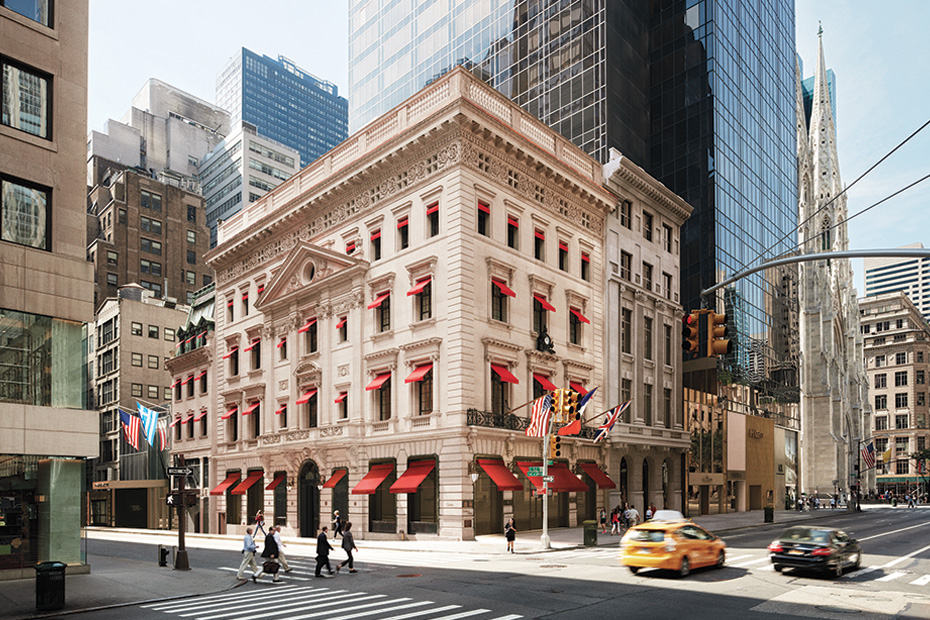
The boutique has an entire room dedicated to Andy Warhol.

Henri Neuendorf

Stores don’t really get more luxurious than the Cartier Mansion on New York’s Fifth Avenue, which recently reopened after a two-and-a-half-year renovation.
Built in 1905 by Robert W. Gibson for the financier Morton F. Plant, the Cartier Mansion was reportedly acquired by Pierre Cartier, a grandson of the company’s founder in 1917 in exchange for a rare pearl necklace coveted by Plant’s wife which was valued at over $1 million.
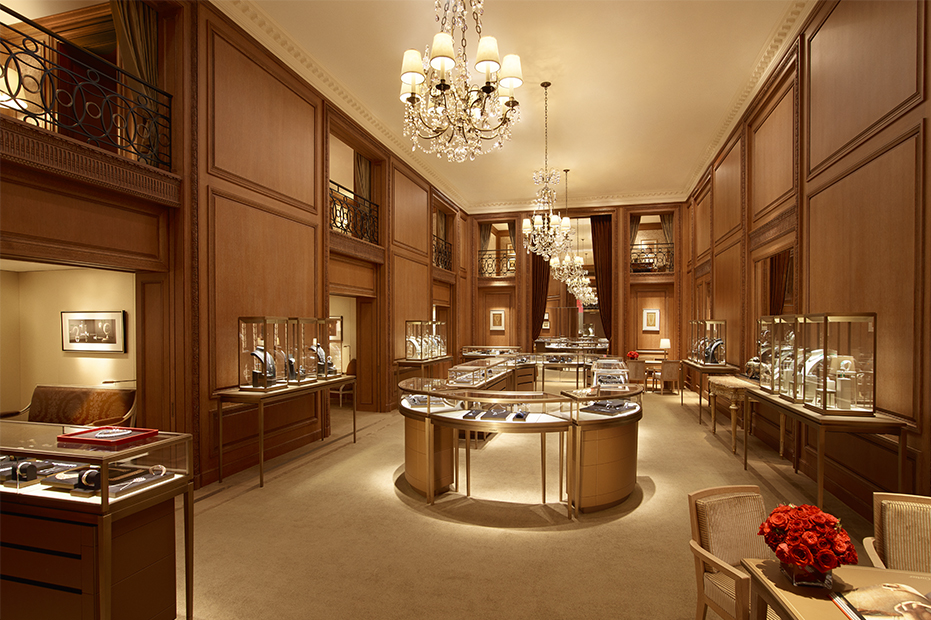
The Oak Room. Photo: courtesy Cartier.
Over the years the building has been used as a residence for the Cartier family, the jeweler’s corporate offices, and is its New York flagship store. Having undergone its last significant renovation in 2001, Cartier’s parent Compagnie Financière Richemont decided it was time for another overhaul to bring the store up-to-date with the needs of wealthy modern shoppers.
“The Cartier Mansion has been a beloved jewel of Fifth Avenue since 1917 and, while the city has evolved to unimaginable heights, the Cartier boutique has consistently remained an integral part of the ever-changing landscape,” said Mercedes Abramo, president and CEO of Cartier North America, in a statement. “We look forward to continuing this legacy in our New York City home for many years to come.”
Restoring a historic landmark is an inherently risky undertaking, both financially and aesthetically. However lead designer and architect Thierry Despont did a magnificent job in remodeling the mansion while maintaining its character and charm and simultaneously meeting the needs of Cartier’s customers.
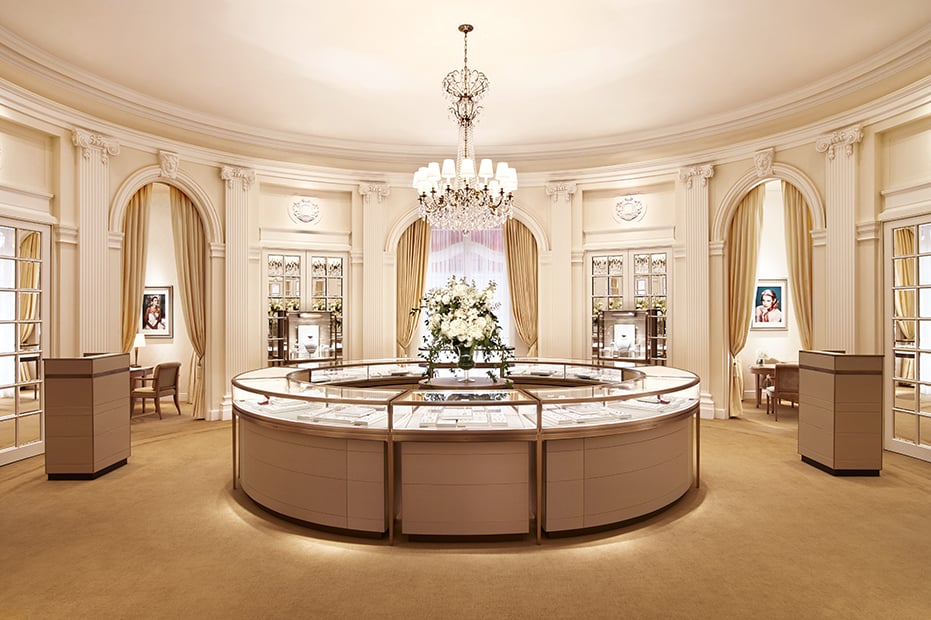
The Princess Grace salon. Photo: courtesy Cartier.
The inside of the structure was completely gutted and rebuilt, with only the outer walls of the old building remaining unchanged. The interior was elegantly remodeled and includes four stories of retail space featuring luxurious oak panelling, thick carpets, and antique furniture—some of which is original to the original building. A number of private rooms and booths are dispersed around secluded parts of the boutique reserved for custom jewelry clients and VIPs.
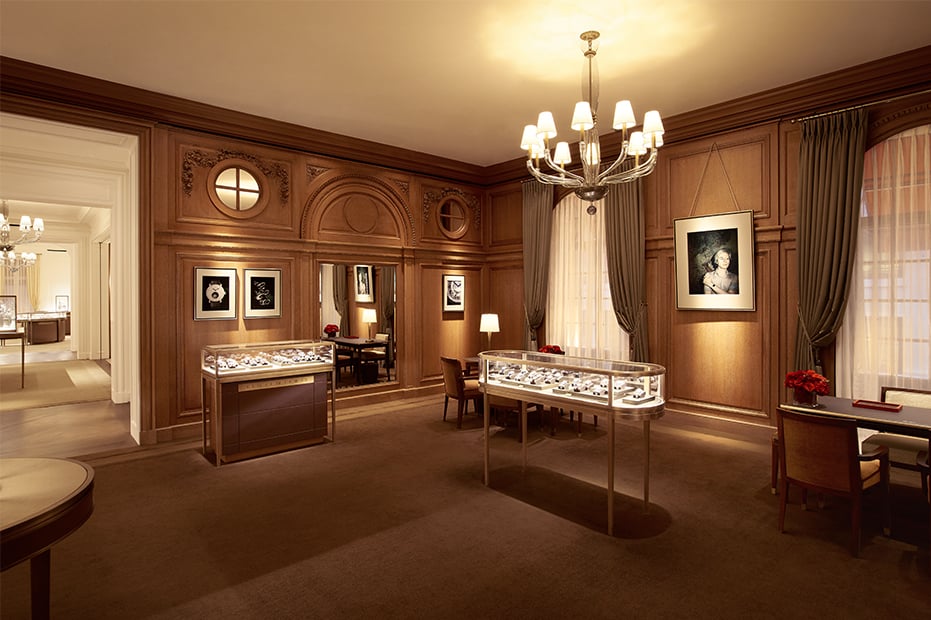
The Andy Warhol salon. Photo: courtesy Cartier.
The walls were decorated in photographs and artworks emphasizing Cartier’s Franco-American connection with several glamorous photographs depicting Princess Grace and Prince Ranier of Monaco.
A room dedicated to men’s watches is named after Andy Warhol, who owned Cartier’s iconic “Tank” watch and supposedly neglected to wind the timepiece, declaring that he wore it only for aesthetic reasons and not to tell the time.
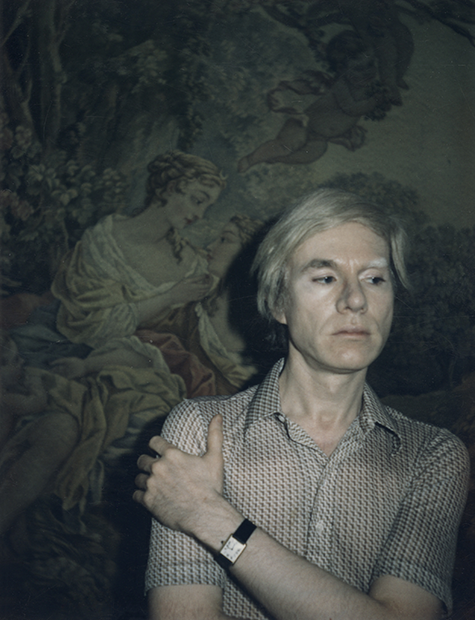
Andy Warhol wore a Cartier “Tank” watch. Photo: courtesy Cartier.
There are also numerous photographs by the French photographer Laziz Hamani who was commissioned by Cartier to document the transformation of the building. The prints of the transformation process add a contemporary edge to the artworks adorning the mansion’s walls.